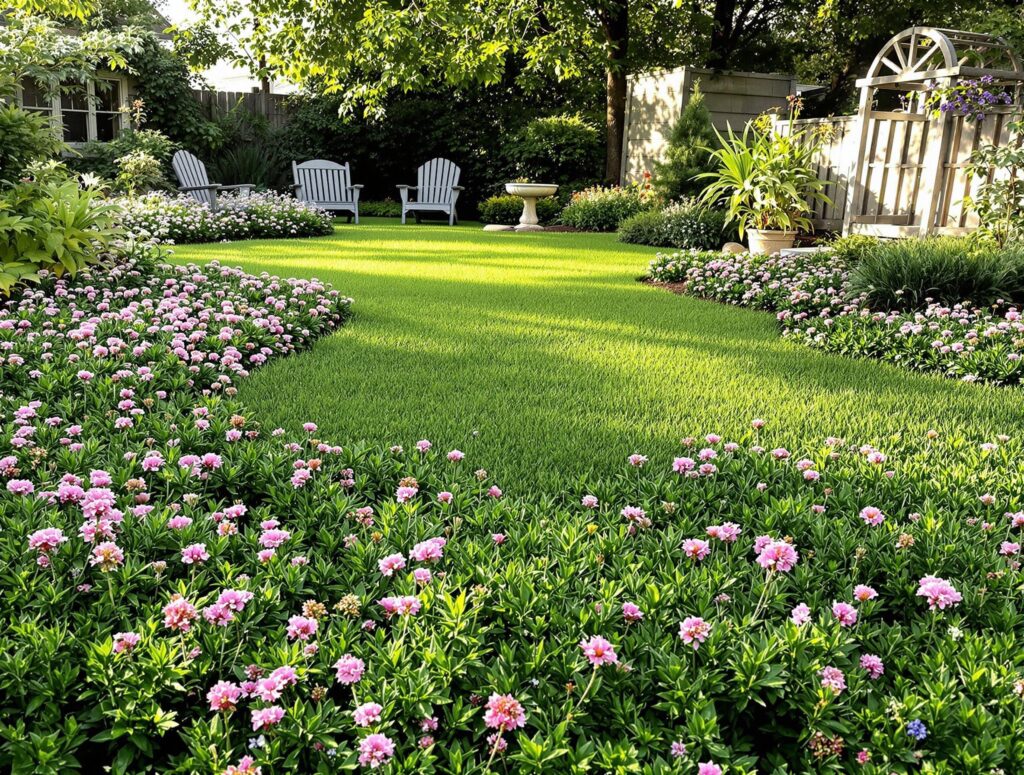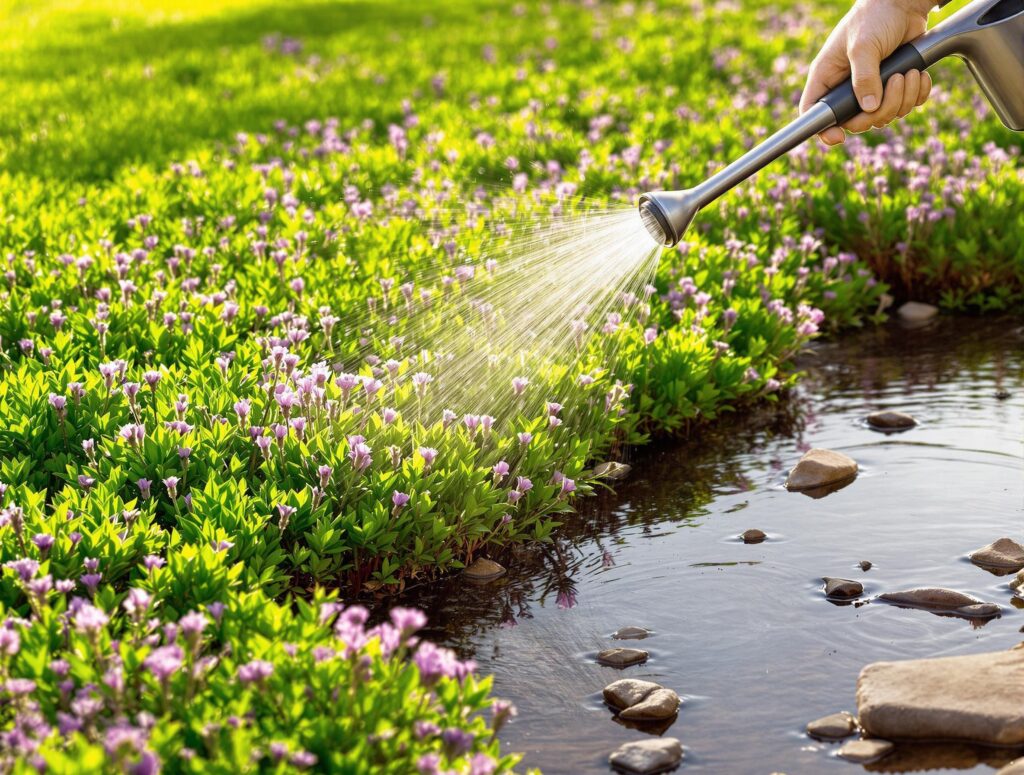
Are you tired of the endless cycle of mowing, watering, and maintaining a traditional grass lawn? It might be time to consider a more sustainable and low-maintenance alternative: a creeping thyme lawn. This comprehensive guide will explore the benefits, planting techniques, care requirements, and challenges of establishing a thyme lawn, helping you make an informed decision for your outdoor space.
Benefits of a Creeping Thyme Lawn
A creeping thyme lawn offers numerous advantages over traditional turf grass. Here are some of the key benefits:
- Low Maintenance: Creeping thyme requires minimal upkeep. Once established, it needs no mowing and very little watering, making it an ideal choice for busy homeowners or those looking to reduce their environmental footprint.
- Drought Resistant: Thyme is highly drought-tolerant, thriving in dry conditions that would cause traditional grass to turn brown. This makes it a excellent choice for water-wise gardening, especially in drought-prone areas. For more information, check out this guide to growing a thyme lawn.
- Aesthetic Appeal: With its vibrant green foliage and delicate pink or purple flowers, a creeping thyme lawn adds a touch of beauty to any landscape. The flowers bloom throughout the summer, attracting pollinators like bees and butterflies. For more plants that attract pollinators, explore our guide on 21 Beautiful Plants That Attract Bees and Butterflies.
- Environmentally Friendly: By reducing the need for water, fertilizers, and pesticides, a thyme lawn contributes to a healthier ecosystem. It also helps prevent soil erosion and improves soil health over time.
- Versatile: Thyme can be used in various landscaping scenarios, from filling in pathways to covering large areas. Its pleasant aroma adds an extra sensory dimension to your garden.
Comparison with Traditional Grass Lawns

While traditional grass lawns have been a staple in landscaping for decades, they come with several drawbacks that make creeping thyme an attractive alternative.
- Maintenance Requirements: Grass lawns require regular mowing, watering, and fertilizing to maintain their appearance. In contrast, a thyme lawn needs minimal care once established.
- Water Usage: Grass lawns consume significant amounts of water, especially during dry periods. Creeping thyme, however, is drought-resistant and requires far less water, making it a more sustainable option.
- Environmental Impact: Traditional lawns often rely on chemical fertilizers and pesticides, which can harm local ecosystems. Thyme lawns, on the other hand, promote biodiversity and support pollinator populations. For a detailed comparison, refer to these pros and cons of creeping thyme lawns.
How to Plant a Creeping Thyme Lawn
Establishing a creeping thyme lawn involves several steps to ensure successful growth and longevity.
- Site Preparation: Choose a location with full sun and well-drained soil. Thyme prefers a neutral to alkaline pH and does not tolerate waterlogged conditions.
- Soil Preparation: Remove any existing grass or weeds and cultivate the soil to a depth of about 15cm. Ensure the area is free of debris and large rocks.
- Planting: Plant thyme plugs or seedlings about 10-15cm apart, depending on their size. Water them thoroughly after planting.
- Best Time to Plant: Spring is the ideal time to plant creeping thyme, as the cool temperatures and moderate rainfall help the plants establish quickly. Plan your garden activities with our comprehensive Planting Calendar Guide.
Care and Maintenance

While creeping thyme is low-maintenance, some care is still required to keep it looking its best.
- Watering: During the first growing season, water the thyme regularly to help it establish. Once established, it only needs occasional watering during dry spells.
- Weed Control: Regularly weed the area until the thyme forms a dense mat. Once established, it will naturally suppress weed growth.
- Pruning: Occasionally trim the thyme to maintain its shape and encourage bushier growth. This also helps rejuvenate the plant and promotes flowering.
Challenges and Considerations

Despite its many benefits, a creeping thyme lawn may not be suitable for all situations. Here are some challenges to consider:
- Foot Traffic: Thyme does not tolerate heavy foot traffic well. It is best suited for areas with light to moderate use, such as garden pathways or decorative borders.
- Climate and Soil: Thyme thrives in dry, well-drained soil and full sun. It may struggle in shady or waterlogged conditions.
- Cost: Establishing a thyme lawn can be more expensive than traditional grass, as it requires purchasing plants rather than seeds. However, the long-term savings in water and maintenance costs can offset this initial investment.
Frequently Asked Questions

- Can creeping thyme replace a large lawn area? While creeping thyme can cover large areas, it may not be the most cost-effective or practical solution for very large lawns due to its slower growth rate and higher initial cost.
- How does creeping thyme handle foot traffic? Creeping thyme tolerates light to moderate foot traffic but may struggle with heavy use or frequent trampling.
- Is creeping thyme safe for pets? Yes, creeping thyme is generally safe for pets and can be a pet-friendly alternative to traditional grass lawns. Ensure your garden is safe for pets with our Cat-Friendly Plants Guide.
- What are the best varieties of creeping thyme for a lawn? Some popular varieties include Thymus serpyllum ‘Coccineus’ for red flowers and Thymus serpyllum for traditional green foliage.
- How long does it take for a creeping thyme lawn to establish? It can take up to three years for a creeping thyme lawn to fully establish and form a dense mat.
By considering these factors and following the guidelines outlined above, you can create a beautiful and sustainable creeping thyme lawn that enhances your outdoor space while reducing maintenance requirements. For another sustainable gardening option, explore our Growing Potatoes Comprehensive Guide.
Additionally, consider incorporating other ground cover options like Purple Dead Nettle for a diverse and vibrant garden landscape.